Born in London in 1950, Antony Gormley is one of Britain’s most treasured artists. Winner of the Turner Prize, the South Bank Prize, the Bernhard Heiliger Award for Sculpture, he is an OBE, an honorary fellow of the Royal Institute of British Architects, an honorary doctor of the University of Cambridge and fellow of Trinity and Jesus College, Cambridge. He’s also just taken the TEDGlobal stage.
“This is going to be a bit of a different thing for you techy guys,” he says calmly. “I’m going to tell you about being a sculptor.” And what he cares about, he says, is making space: “the space that exists within us and without us.”
“I don’t know how many of you grew up in the 1950s,” he says. “But when I was a child I was sent upstairs for an enforced rest.” Off he’d go to a hot, small, light room where he had to lie still in the middle of the day. “It was ridiculous,” he says. “But for some reason i promised myself that I wasn’t going to move. There I was, lying there with this hot, dark, claustrophobic space behind my eyes.” And yet, soon, a strange thing happened. “I really looked forward to that half an hour of enforced immobility and rest,” he says. “I really looked forward to going to that place of darkness.” And with that, he asks the audience to shut their own eyes and experience their own interior spaces. Captivated by his hypnotic, soporific voice, the audience is entirely silent. We can all now hear a pin drop.
Now for some of his work. First, Gormley shows us a project he made back in the 1970s. Rearranged Desert involved him adjusting the desert landscape in the middle of the United States by collecting rocks and then throwing them as far as he could. His aim was to prompt people to look at the space differently after his intervention. He then acknowledges that curator Chris Anderson suggested he didn’t show this piece for fear of the audience writing him off as a “crazy modern artist who doesn’t do anything.” He doesn’t seem too worried about this.
Gormley’s work is about the elements, the environment, “the infinite, subjective space that each of us lives in–but from the other side of appearance.” He shows himself being molded and he talks of mapping space using the language of neutrinos. He wants to take the boundaries of the body and reverse that old Greek idea of drilling through marble to identify the skin, the surface. “Here we’re working from the other side,” he says, showing a piece made from a lead case model of his own body. What’s crucial with this piece are the eyes. “They’re closed but it’s called Learning to See because it’s about an object that works reflexively.”
Gormley is clearly a persistent asker of questions. How about talking about the body as an energy center, not as a statue? Is there a way to go beyond the horizon? Can we use a body as an empty catalyst for a kind of empathy with the experience of space time? It’s baffling, thought-provoking and something like a spiritual experience, at least for this observer. He shows Another Place, a piece he installed on the mouth of the Mersey river, outside of Liverpool.
“The pieces appear and disappear, but more importantly, they create a feeling, a feeling that involves living,” he says. The piece is all about our relation with the limit, the edge, the horizon.
More philosophical questions: it possible to supplant the first, biological body with an architectural body? He shows Room, a piece he made for the Australian desert. “It’s an object for the mind,” says Gormley, who adds that he has never revealed the exact location of the work. It’s made from concrete, but it’s a site surrounded by a completely flat horizon. “This is just simply asking again, as if we had arrived for the first time: what is the relationship of the human project to time and space?”
Gormley ends with Blind Light, which he describes as perhaps his most open work. “At a conference themed around radical openness, perhaps this is as radical as I get,” he says softly, to reveal a stunning, magical piece of work for which light and water vapors were his materials.
“As you walk towards the open threshold, you disappear, both to yourselves and to others,” he explains. “If you hold your hand out in front of you, you can’t see it. If you look down, you can’t see your feet. You are now consciousness without an object, free from the dimensionful and measured way in which life links us to the obligatory.” You’re not alone in this space, it should be noted, but instead will hear disembodied voices and even be confronted by faces when people inadvertently come (very) close. Meanwhile, people within become the viewed from without.
“To me, art is not about objects of high monetary exchange, it’s about reasserting our firsthand experience in present time,” he concludes, gently. “As John Cage said, we are not moving toward some kind of goal. We are at the goal and it is changing with us. If art has any purpose, it is to open our eyes to that fact.” What a lovely, peaceful, gorgeous talk.
TED Photos: James Duncan Davidson. Other photos: Antony Gormley
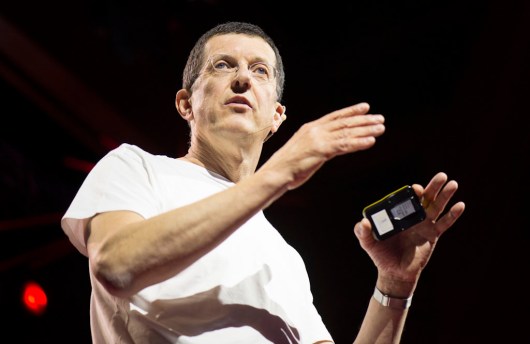
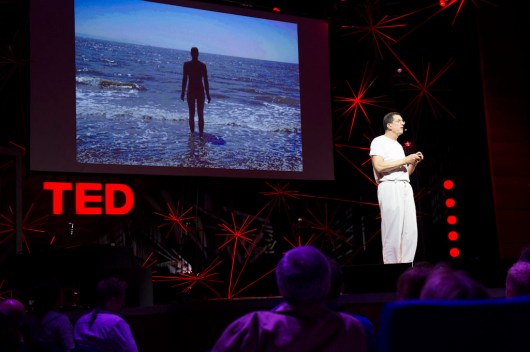
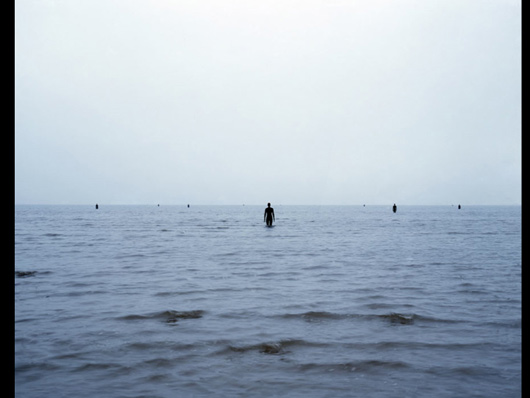
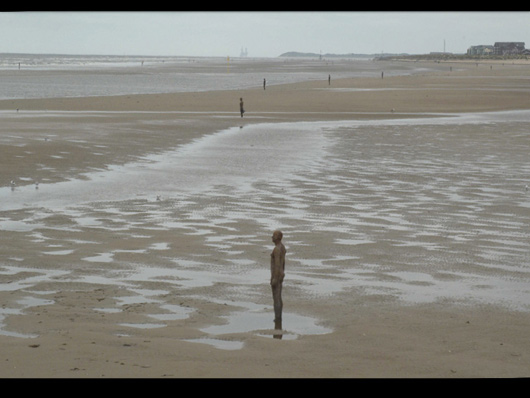
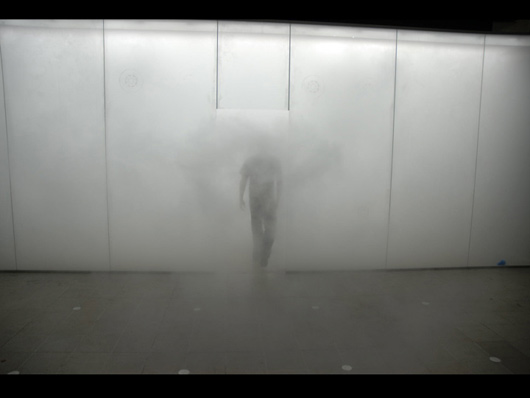
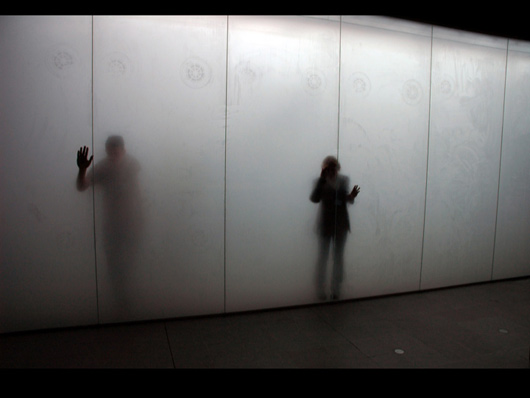
Comments (2)
Pingback: Four poems; one place | chorleywoodsix
Pingback: Design Iterations | Suzanne Niccolls